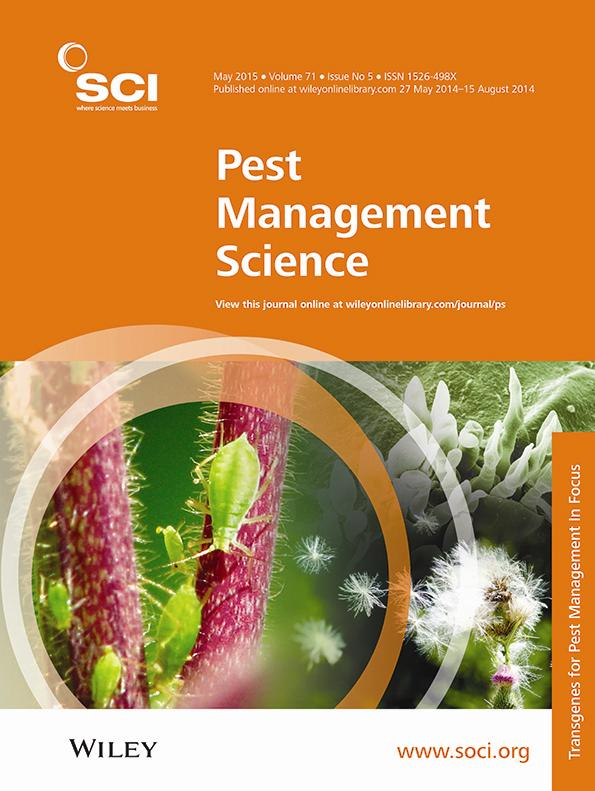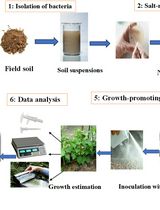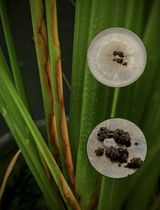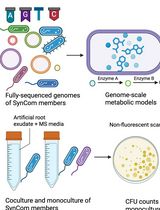- EN - English
- CN - 中文
Flood Inoculation of Fusarium eumartii in Tomato Seedlings: Method for Evaluating the Infectivity of Pathogen Spores
番茄幼苗中的齐穗接种技术:评估尖孢镰刀菌孢子感染力的方法
发布: 2025年02月05日第15卷第3期 DOI: 10.21769/BioProtoc.5198 浏览次数: 1097
评审: Noelia ForesiMalgorzata Lichocka
Abstract
The Fusarium genus includes various fungi of great significance in agriculture. Fusarium solani f. sp. eumartii (F. eumartii), traditionally known as a potato pathogen, has also been identified as a cause of disease in tomatoes. This protocol provides a detailed, efficient, and robust flood-inoculation method for assessing F. eumartii infection of young tomato seedlings grown on MS medium plates. It includes the evaluation of the lesion area and the quantification of the remaining fungal inoculum in tomato seedlings. In summary, the straightforwardness and efficiency of this bioassay make it a powerful quantitative tool for selecting fungicidal compounds or defense response inducers in tomato plants, offering a promising approach with significant potential for preventing fungal diseases in crops.
Key features
• Accelerated fungal infection method in tomato seedlings, shortening overall experimental time.
• Allows simultaneous evaluation of fungal infectivity and quantitative remaining inoculum.
• Easily adaptable for screening fungicides and defense inducers in various plant–pathogen interactions.
Keywords: Fusarium (尖孢镰刀菌)Graphical overview
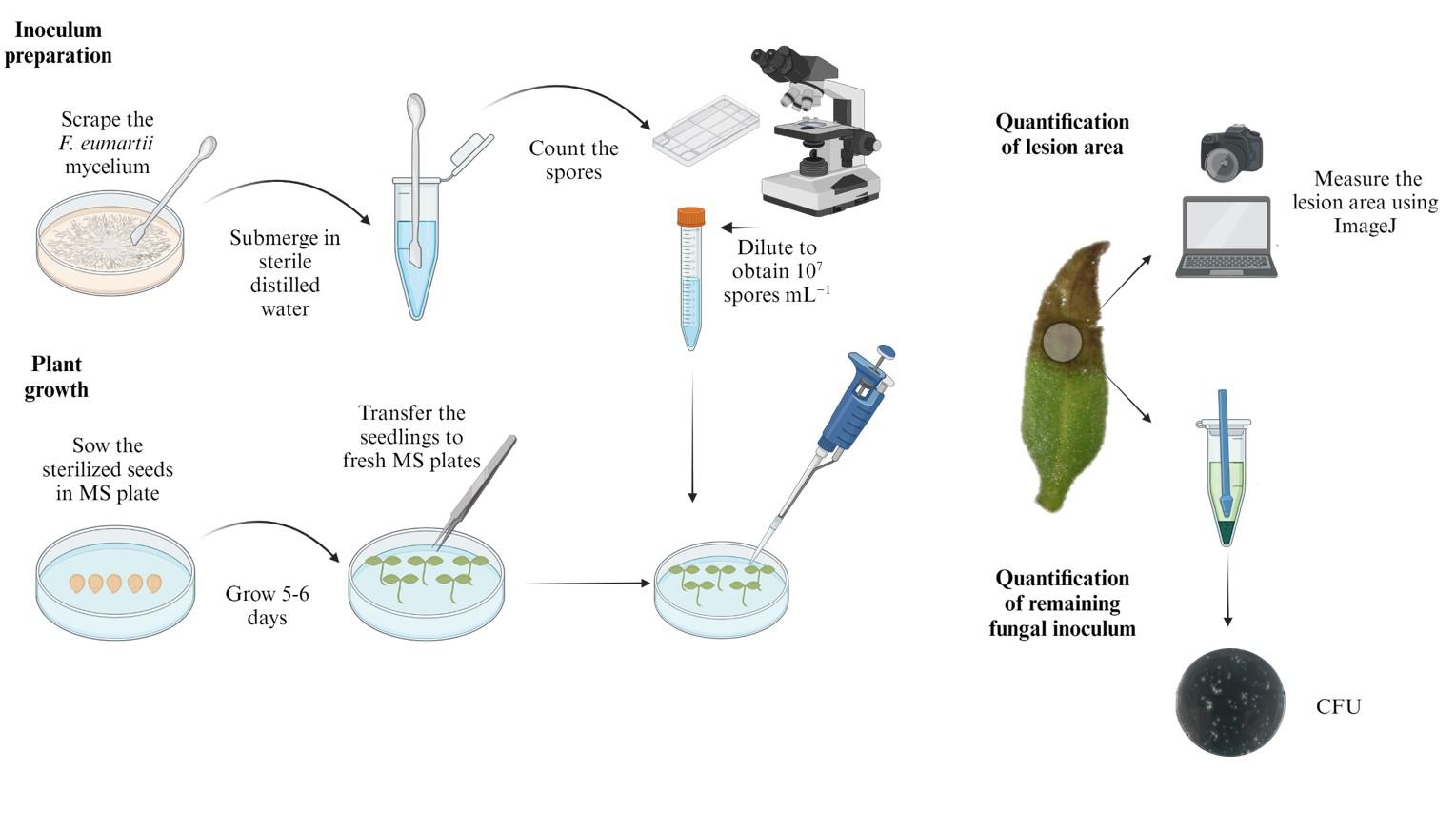 Graphical representation of the protocol for assessing the infectivity of Fusarium solani f. sp. eumartii in tomato seedlings using a flood-inoculation method. The diagram outlines the main steps: i) preparation of the inoculum from fungal mycelium, ii) germination and growth of tomato seedlings, iii) inoculation of seedlings with the spore suspension, iv) infection assessment by measuring lesion areas and remaining fungal inoculum, and v) data analysis. Arrows indicate the sequence of the experimental procedure.
Graphical representation of the protocol for assessing the infectivity of Fusarium solani f. sp. eumartii in tomato seedlings using a flood-inoculation method. The diagram outlines the main steps: i) preparation of the inoculum from fungal mycelium, ii) germination and growth of tomato seedlings, iii) inoculation of seedlings with the spore suspension, iv) infection assessment by measuring lesion areas and remaining fungal inoculum, and v) data analysis. Arrows indicate the sequence of the experimental procedure.
Background
Numerous species within the Fusarium genus, such as Fusarium oxysporum and Fusarium solani, are responsible for significant agricultural losses worldwide, both before and after harvest [1]. Fusarium solani f. sp. eumartii (F. eumartii) is a significant post-harvest disease affecting potato tubers, leading to reddish-brown mottling between leaf veins and dry rot [2]. While traditionally recognized as a potato pathogen (Solanum tuberosum), F. eumartii has also been identified in tomato (Solanum lycopersicum) plants. Isolates from these plant species have also shown pathogenic effects in other members of the Solanaceae family [3]. Different methods of infecting tomato plants with Fusarium fungi have been reported in the literature. In this protocol, we describe a simple, reliable, and reproducible way to assess the infection of tomato seedlings with this pathogen. This method was adapted from a seedling-based assay initially developed by Uppalapati et al. [4] for Pseudomonas syringae pv. tomato, demonstrating its versatility and effectiveness in studying plant-pathogen interactions. Moreover, this approach allows a practical screening of different compounds that can act with fungicides, as described in the work of Terrile et al. [5].
Materials and reagents
Biological materials
1. Fusarium solani f. sp. eumartii (F. eumartii) isolated 3122 (Estación Experimental Agropecuaria -EEA-INTA, Balcarce, Argentina; Radtke and Escande, 1973)
2. Tomato (Solanum lycopersicum cv. Platense) was obtained from a commercial supply
Reagents
1. Agar (BD-DIFCO, catalog number: 214530)
2. Ampicillin (Amp) (GenBiotech, catalog number: A-0104-5)
3. Commercial bleach (sodium hypochlorite <5%)
4. Ethanol (Biopack, catalog number: 2000165400)
5. Murashige and Skoog (MS) medium (Sigma, catalog number: M5524)
6. KOH (Sigma, catalog number: 221473)
7. Potato dextrose agar (PDA) (OXOID, catalog number: CM0139)
8. Silwet L77 (Momentive, catalog number: A0300026)
9. Sterile distilled water
10. Triton X-100 (Biopack, catalog number: 2000200308)
Solutions
1. MS medium, 1 L (see Recipes)
2. PDA medium, 1 L (see Recipes)
3. 30% bleach solution (see Recipes)
4. 70% ethanol (see Recipes)
Recipes
1. MS medium (1 L)
4.4 g of MS basal medium
8 g of agar
Adjust to pH 5.7 with 1 M KOH and autoclave at 121 °C for 15 min
2. PDA medium (1 L)
39 g of PDA
Autoclave at 121 °C for 15 min
3. 30% bleach solution
Add 3 mL of bleach into 7 mL of distilled water and 0.04% Triton X-100
4. 70% ethanol
Add 73 mL of ethanol 96% into 27 mL of distilled water.
Laboratory supplies
1. Forceps
2. Conical tubes (15 and 50 mL) (Deltalab, catalog number: 429942 and 429931)
3. Household aluminum foil for multiple uses
4. 1.5 mL microcentrifuge tubes (Deltalab, catalog number: 4092.4N)
5. Neubauer chamber (Marienfeld, catalog number: 0610101)
6. Paper towels
7. Parafilm (Amcor, catalog number: PM-996)
8. Petri dishes 90 × 14 mm (Deltalab, catalog number: 200200)
9. 0.5 mm diameter punching tool
10. 5 mL pipette tips (Deltalab, catalog number: 900038.C)
11. 1 mL pipette tips (Deltalab, catalog number: 200012)
12. 2–20 μL pipette tips (Deltalab, catalog number: 200016B)
13. Micro-pestle (Axygen, catalog number: AXYPES15BSI)
Equipment
1. Cultivation room at 25 °C under 250 μmol photons m-2 s-1 with 70% ± 5% relative humidity and 16:8 h light/dark cycle
2. Cold room at 4 °C
3. Laminar air flow equipment (CASIBA, model: 3101-FLV-2)
4. Pipettes: PIPETMAN P20L, P200, P1000, P5000 (Gilson, model: F144056M, F144058M, F144059M and F144066)
5. Vortex (VELP Scientifica, model: ZX-3)
6. Stereomicroscope (Nikon, model: SMZ800)
7. Digital camera (Canon, model: DS126431)
Software and datasets
1. ImageJ software (NIH, https://imagej.net/)
2. Graphpad Prism version 5.01 software for Windows (GraphPad Software, La Jolla, California, USA, 2007)
Procedure
文章信息
稿件历史记录
提交日期: Sep 25, 2024
接收日期: Dec 15, 2024
在线发布日期: Jan 5, 2025
出版日期: Feb 5, 2025
版权信息
© 2025 The Author(s); This is an open access article under the CC BY-NC license (https://creativecommons.org/licenses/by-nc/4.0/).
如何引用
Terrile, M. C., Mesas, F. A., Picco, M. E., Salcedo, M. F. and Mansilla, A. Y. (2025). Flood Inoculation of Fusarium eumartii in Tomato Seedlings: Method for Evaluating the Infectivity of Pathogen Spores. Bio-protocol 15(3): e5198. DOI: 10.21769/BioProtoc.5198.
分类
植物科学 > 植物免疫 > 宿主-细菌相互作用
微生物学 > 微生物-宿主相互作用 > 真菌
您对这篇实验方法有问题吗?
在此处发布您的问题,我们将邀请本文作者来回答。同时,我们会将您的问题发布到Bio-protocol Exchange,以便寻求社区成员的帮助。
提问指南
+ 问题描述
写下详细的问题描述,包括所有有助于他人回答您问题的信息(例如实验过程、条件和相关图像等)。
Share
Bluesky
X
Copy link


